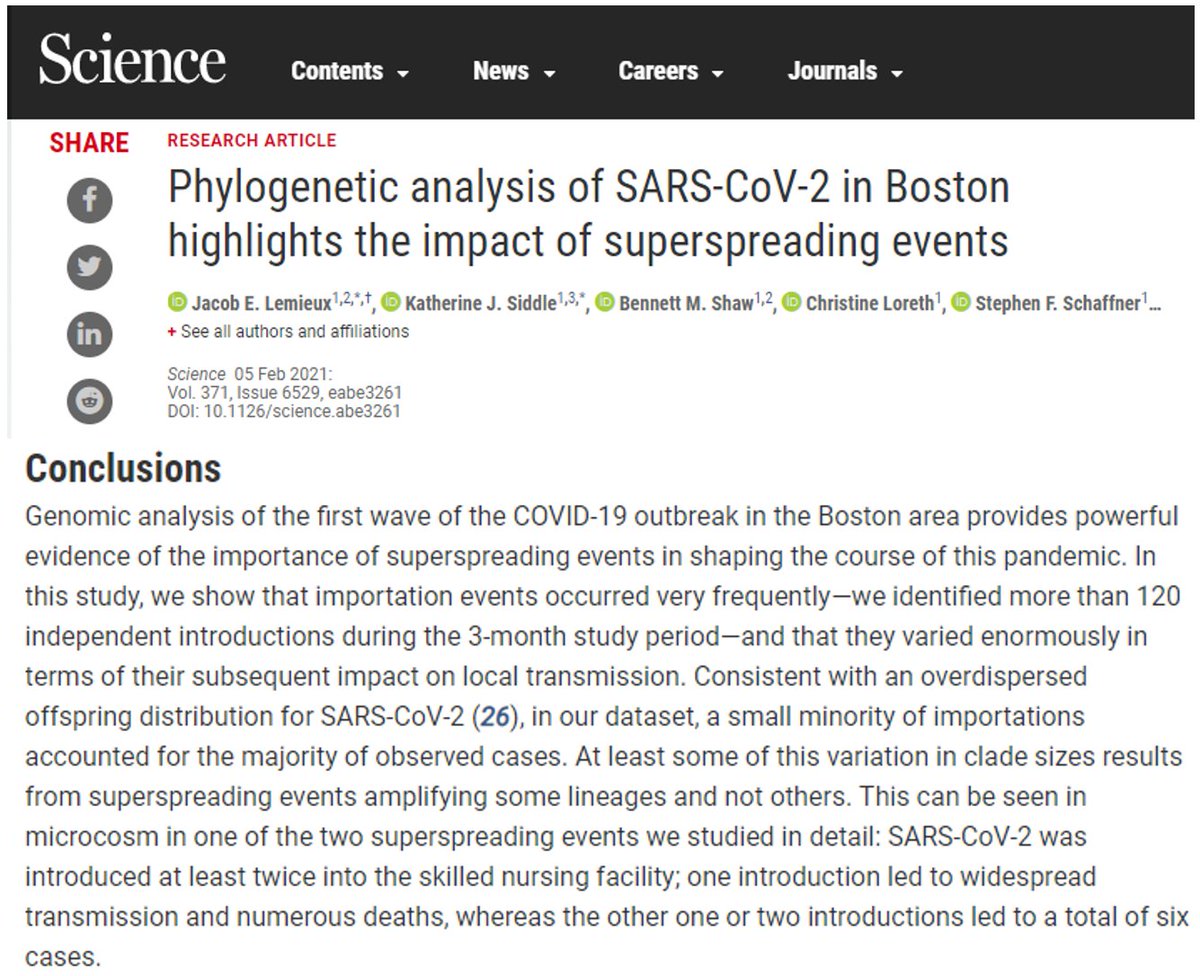
1/ Science: extensive genomic analyses in Boston show the importance of superspreading
"More than 120 introductions of SARS-CoV-2 into Boston, only a few responsible for most local transmission: 29% of intros = 85% of cases"
Superspreading ==> aerosols
science.sciencemag.org/content/371/65…
"More than 120 introductions of SARS-CoV-2 into Boston, only a few responsible for most local transmission: 29% of intros = 85% of cases"
Superspreading ==> aerosols
science.sciencemag.org/content/371/65…

2/ It is very difficult to transmit to a lot of people through large, ballistic droplets, or through aerosols in close proximity ("short-range airborne").
Surfaces transmit poorly (e.g. @CDCgov and @nature: nature.com/articles/d4158…)
Surfaces transmit poorly (e.g. @CDCgov and @nature: nature.com/articles/d4158…)
3/ Superspreading, in every published case I am aware of, involves aerosol transmission in shared room air.
Like Skagit choir case we investigated: 52 ppl, including 13 m behind index case. High structure of their actions makes other ways unlikely. See:
Like Skagit choir case we investigated: 52 ppl, including 13 m behind index case. High structure of their actions makes other ways unlikely. See:
https://twitter.com/jljcolorado/status/1306450428867964930
4/ But those case studies are difficult, and people bent on denying airborne transmission at all costs can always raise some doubts.
E.g. airborne transmission of smallpox was disputed for 60 yrs, only accepted after stunningly clear case:
E.g. airborne transmission of smallpox was disputed for 60 yrs, only accepted after stunningly clear case:
https://twitter.com/jljcolorado/status/1311003491427446784
5/ May get obvious evidence this time, but only from places with almost 0 cases (as for smallpox)
E.g. airborne transmission now becoming obvious in quarantine hotels in New Zealand and Australia. AUS still denies, NZ has said "most likely airborne"
E.g. airborne transmission now becoming obvious in quarantine hotels in New Zealand and Australia. AUS still denies, NZ has said "most likely airborne"
https://twitter.com/DamianTheAussie/status/1356040350075240448
6/ But the advent of generalized genomic surveillance is a HUGE advance. For COVID and for lots of other diseases. I think the end Chapin's 1910 error that airborne transmission is very difficult (#dropletdogma) will come from this technique.
https://twitter.com/jljcolorado/status/1307922790679339010
7/ In summary: #COVIDisAirborne.
- Goes through the air (as @WHO finally says). In close proximity & shared room air
- Less contagious than measles, but more contagious than tuberculosis, BOTH accepted airborne
- Bc less contagious, long-range trans. (beyond room) less common
- Goes through the air (as @WHO finally says). In close proximity & shared room air
- Less contagious than measles, but more contagious than tuberculosis, BOTH accepted airborne
- Bc less contagious, long-range trans. (beyond room) less common
• • •
Missing some Tweet in this thread? You can try to
force a refresh



